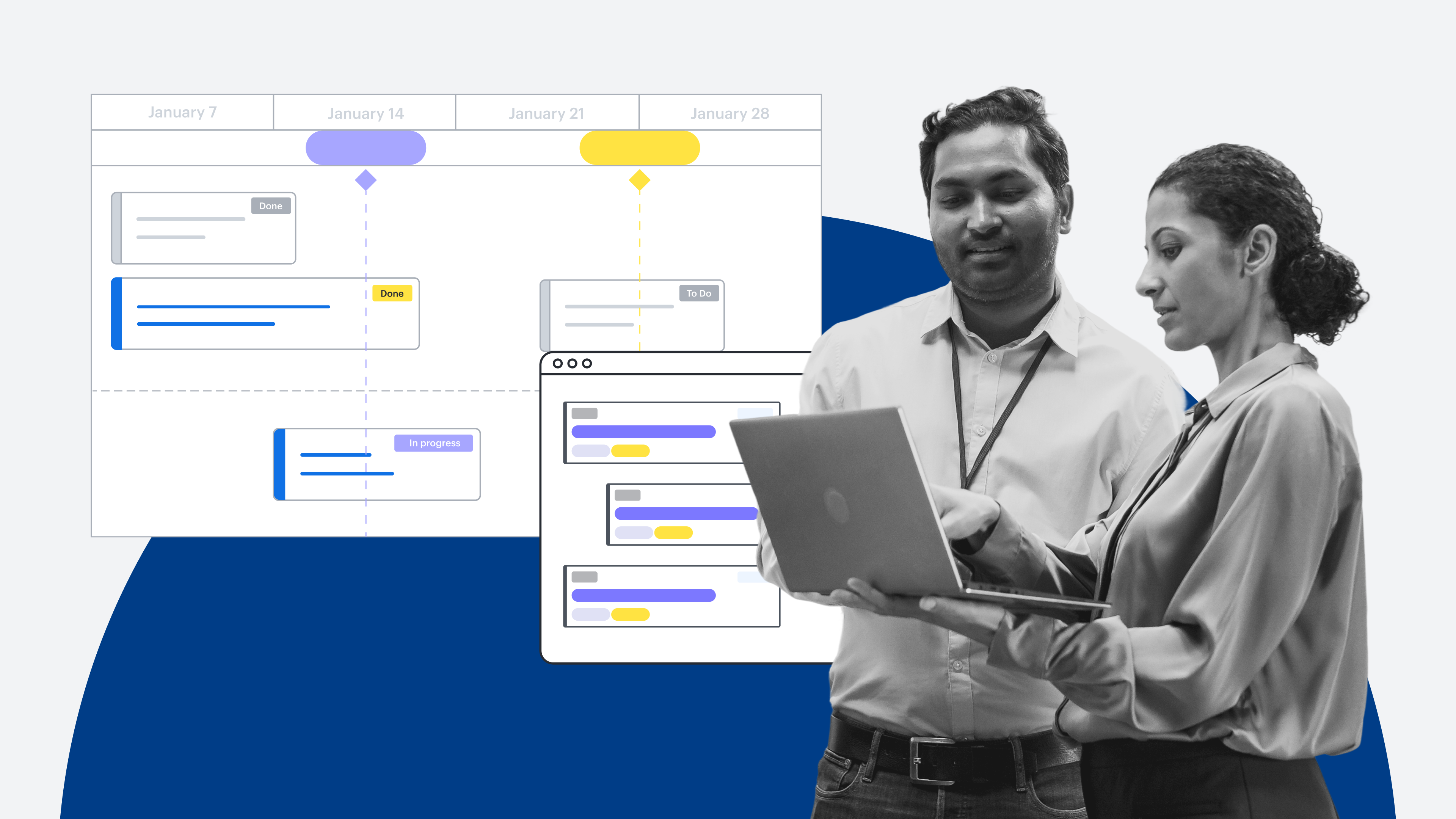
How to use a project progress report for improved communication
Reading time: about 7 min
Key takeaways:
-
A project progress report is an overview of how a project is advancing toward its deliverables and objectives.
-
Improve communication and monitoring by choosing the right tools for your project progress report.
-
Use visuals, such as Gantt charts, timelines, and roadmaps, to craft an effective project progress report.
As a project manager, you are often walking the fine line between detailed analysis and a bird’s-eye view of projects. The layers and complexity of today’s modern projects can make monitoring progress pretty challenging.
There are ways to make it easier, though: Your approach to creating project progress reports can be collaborative, transparent, and timely.
What is a project progress report?
Project progress reports provide an overview of how a project is advancing toward its deliverables and objectives. These reports include a high-level snapshot of information such as work in progress, work completed, and milestones.
Progress reports are also a good opportunity to identify risks or other obstacles so those issues can be addressed. The time spent reviewing progress reports should be used to clarify any gray areas and determine next steps. Project progress reports are important because they align team members and stakeholders on current progress and inform decision-making for future planning.
Creating and sharing a detailed project progress report happens most often in the following scenarios:
-
During quarterly or annual reviews
-
After each milestone or sprint (for example, once every two weeks)
-
At key intervals within the project lifecycle
-
During retrospectives or project post-mortems
How to monitor and communicate project progress
To monitor projects, you’ll want to start by determining key objectives and success metrics for the project.
Also, take some time to determine what data will be important for project progress reports. Examples of important data include time to completion, budget, scope creep, and risk assessment.
Once you know the key objectives and main metrics, you can focus on critical points in your timeline: What are the key dates that must be met? What dates cannot be moved? And where are dependencies occurring? This is the information you will want to share with team members so they have clear milestones to work toward.
You can also improve monitoring by setting up a process for easily collecting data, identifying challenges and opportunities early on, and sharing key takeaways that are easy to understand for both your team and your stakeholders.
Identify specific intervals for when you’ll monitor the project
You can use your key dates for the next step in setting up your monitoring approach: determining the intervals for team check-ins.
It typically won’t be necessary to monitor a project every hour, but your critical dates will help you figure out how often you’ll want teams to check in. You’ll also want to set a schedule for updating stakeholders so that they know ahead of time when your projects will need their input.
Decide how to collect data
You’ll need team cooperation to get useful information when you are monitoring projects. Set the expectation in the kickoff phase that you will need updates from team members. Explain the importance of giving timely information and how that information will be used to keep the project on track as a whole.
An interactive tool makes it easier to share updates with team members. For example, Lucid has a number of collaborative and data visualization features that allow for real-time updates, shareable formats, and transparency so that everyone is aligned on where the project is and what’s needed next.
In Lucid, you can add reporting shapes to your project report to show progress at a glance. With progress bars, ownership charts, and workload trackers, you can break down tasks by each team member to provide an easy-to-understand overview. And thanks to Lucid’s data linking capabilities, you can ensure your Lucid board is showing the most up-to-date information that automatically syncs with your existing system of record.
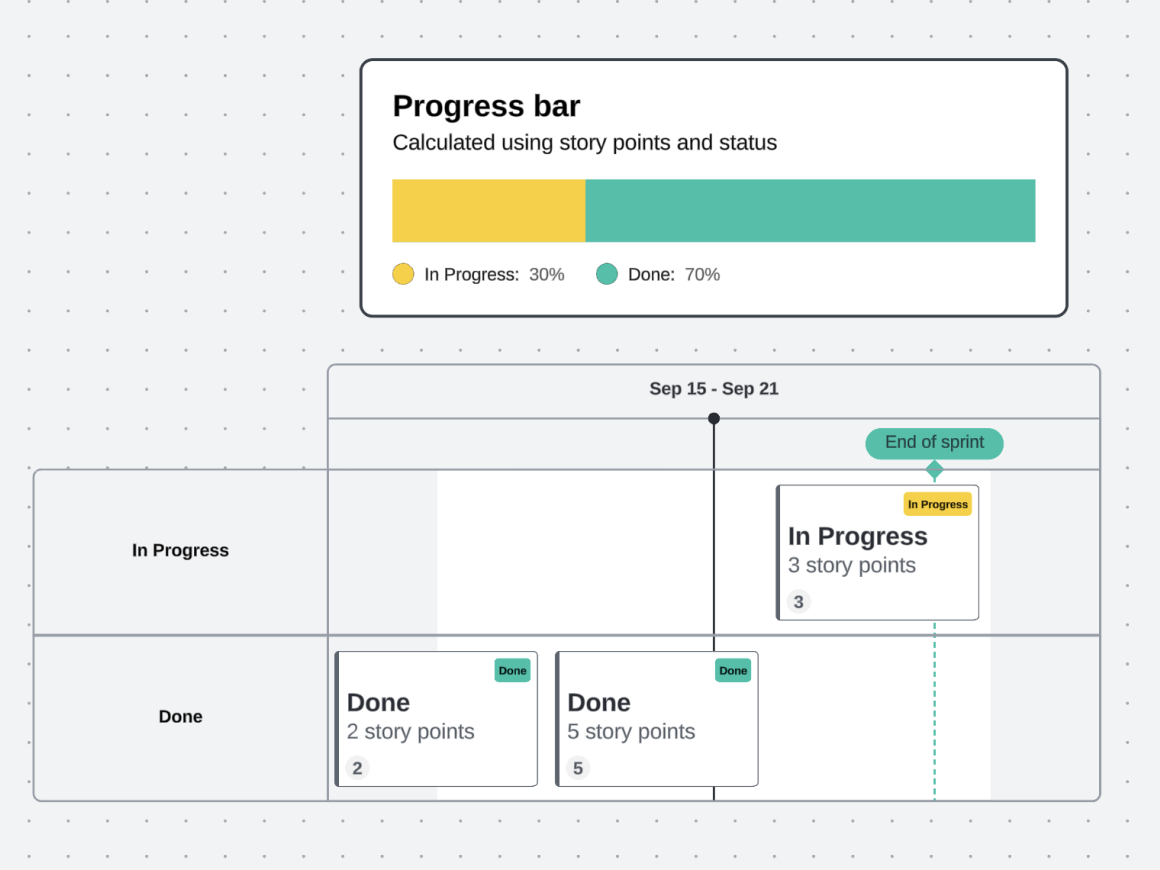
Clarify and adjust expectations
Projects typically have a few twists and turns that require more direction from the project manager. Teams will want to know how new developments impact projects and priorities. You can use interactive visuals to illustrate how projects may change in terms of scope and timing. You can also use visuals to communicate any steps in the process that have become more urgent or more critical.
Having these tools at your disposal can also help with one of the major challenges of project management: getting people to respect deadlines. If team members clearly understand how missing a deadline impacts the project as a whole, they will be more likely to try to stick to the timeline, especially if missing the deadline results in more work or less time for them to complete another step in the process.
If you’re working with the same team on multiple projects, visuals can also help you communicate which projects are a priority, which have more slack, and which are related or share dependencies. That way, teams can adequately juggle multiple assignments.
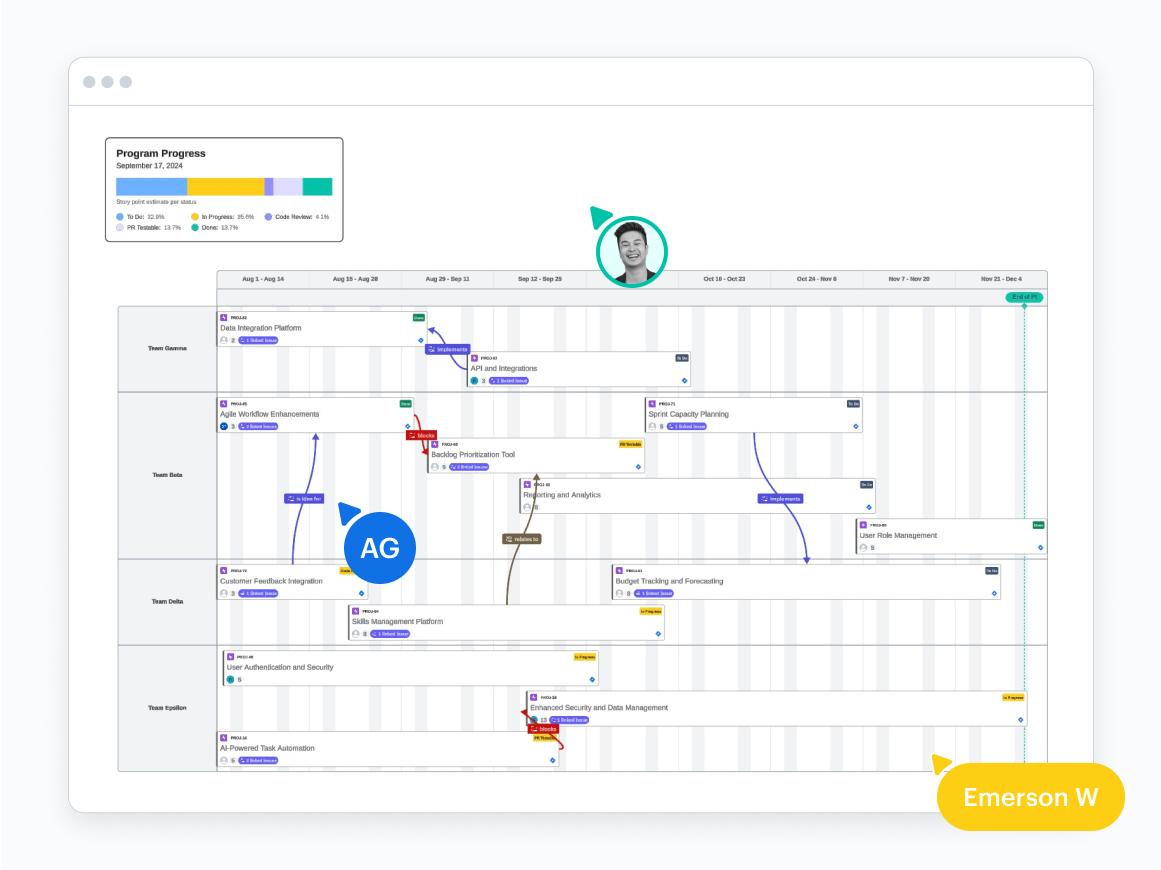
Select the right tools to communicate your progress
As complex as projects are these days, it’s important to have the right tools that can help you communicate quickly, effectively, and in real time.
Spreadsheets are often a go-to for project monitoring, but they aren’t very useful if the information isn’t up to date.
There are also a number of task management applications like Jira and Asana that are commonly used for project management. While these tools provide structure that’s great for managing actual tasks, they don’t provide the high-level overview that stakeholders need to understand progress and make decisions.
Data visualization and intelligent diagramming applications can integrate with your current programs to help you take the information you already have and illustrate it for stakeholders so that they can more easily provide feedback. Interactive applications that have a collaborative element can ensure your updates are current and the information is reliable.
On top of data visualization, Lucid has customizable templates, such as project progress dashboards, for collaborative data management. These templates allow people to work simultaneously on updates and talk through potential next steps to ensure the successful completion of a project.
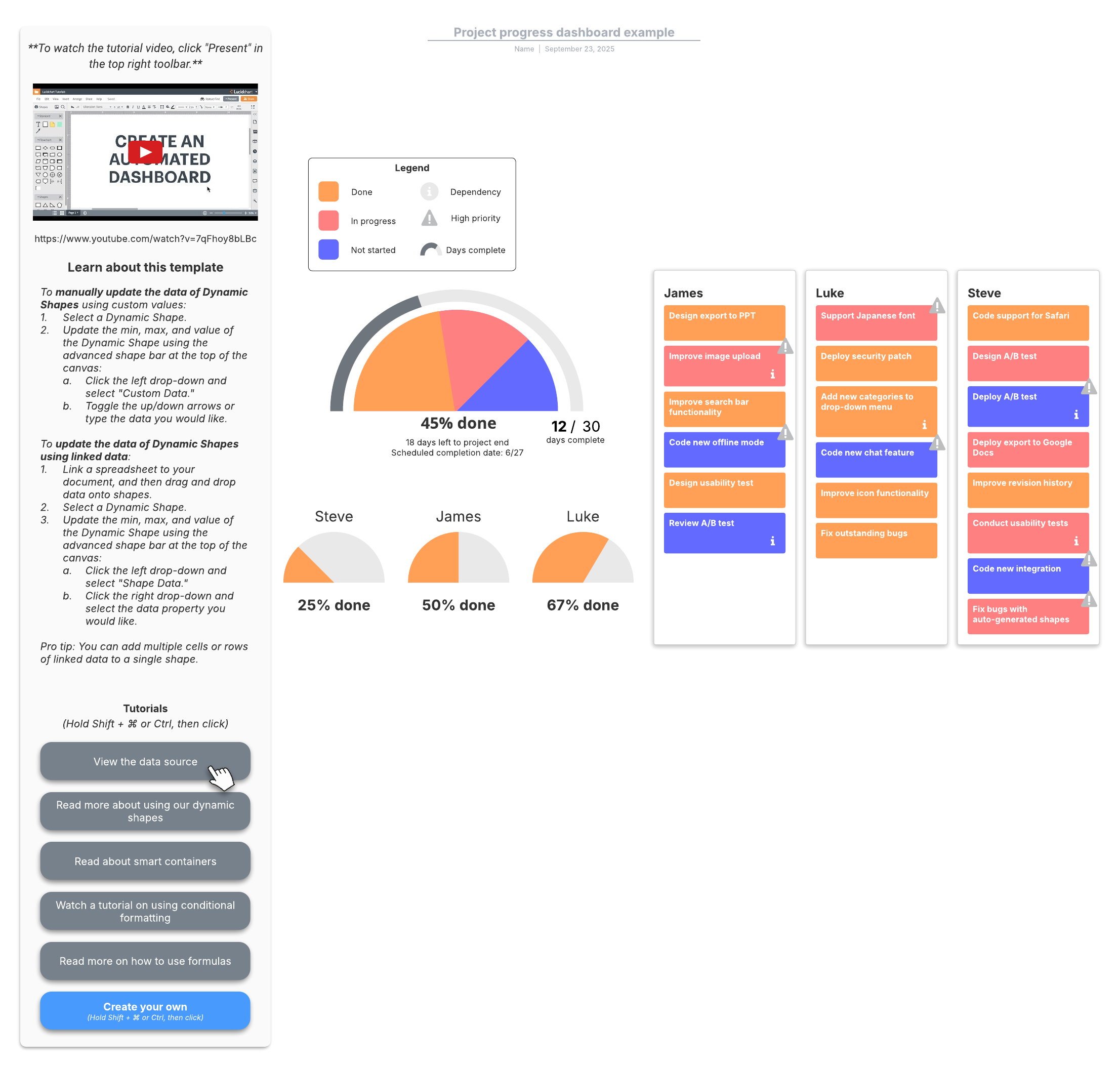
Project tracking diagrams: Creating a project progress report
Part of monitoring projects is identifying the key takeaways of how your project is progressing according to time, costs, and quality. But whenever you’re dealing with lots of information, you need ways to help your audience easily see the main point.
Here are a few common visuals that you can include in your project progress report to communicate progress effectively:
Gantt charts: These charts are great for illustrating the steps in a process, how long each step takes, and which stages of the project overlap. It’s especially beneficial for showing various teams how their work impacts the project as a whole.
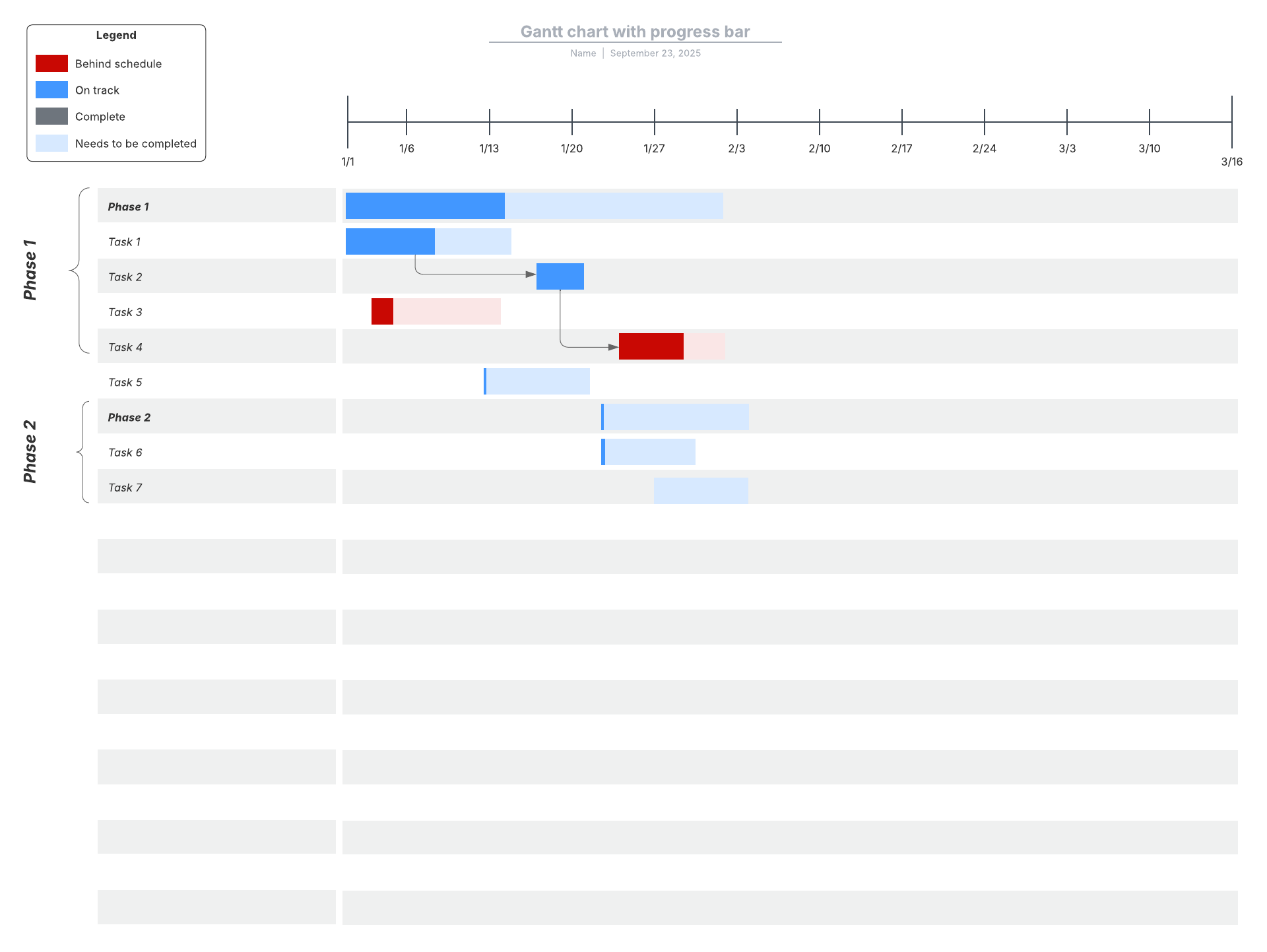
Timelines: Timelines are a project manager’s best friend. Project managers are often fielding the question,“When will this project be complete?” Timelines can quickly tell you if you’re on schedule and how changes in dates impact the final deadline.
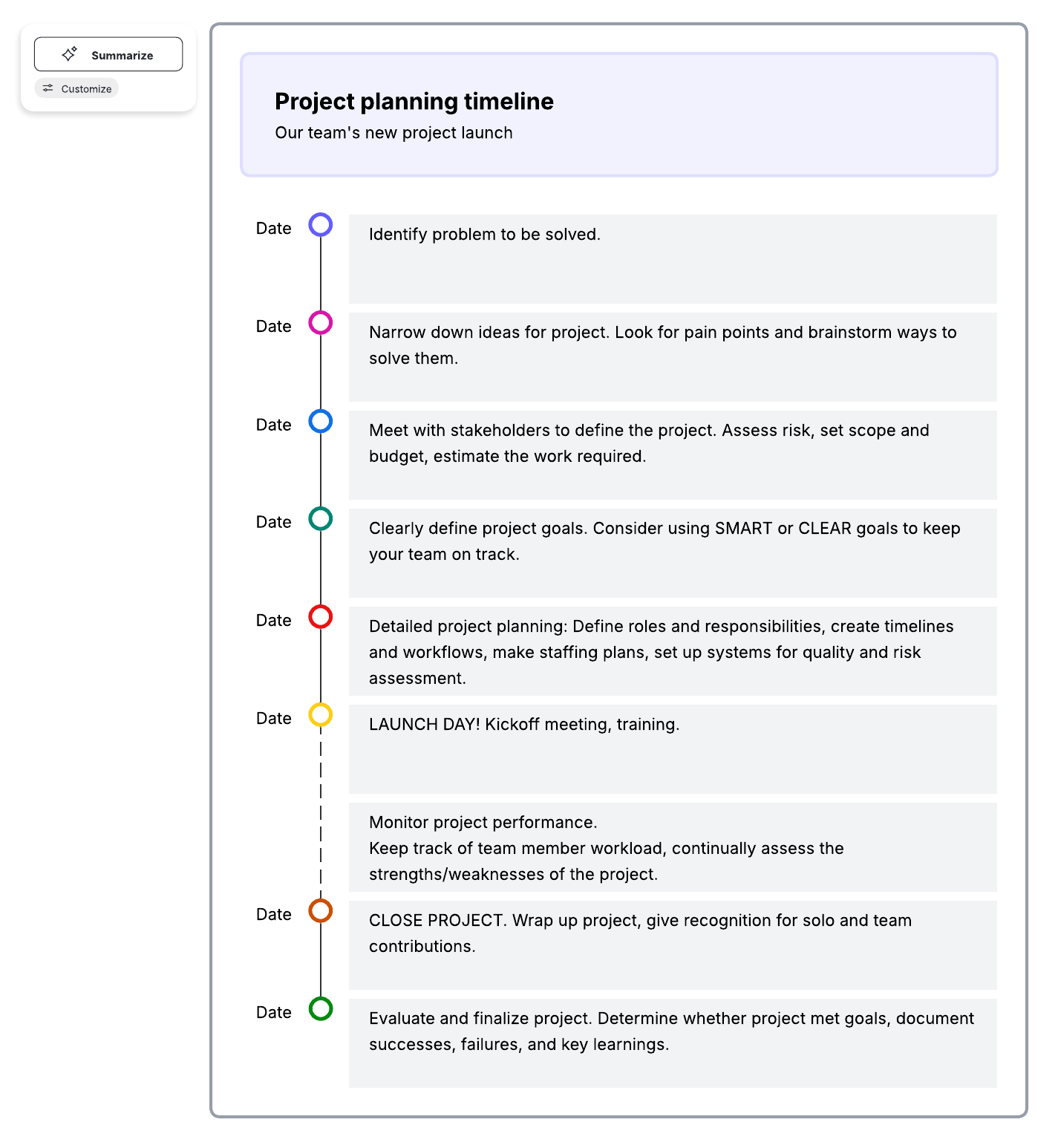
Roadmaps: Roadmaps allow for a high-level discussion of the milestones of a project and the path required for completion. Roadmaps are also a natural format for enforcing a “single source of truth” for what the project is expected to achieve and how the work will get done.
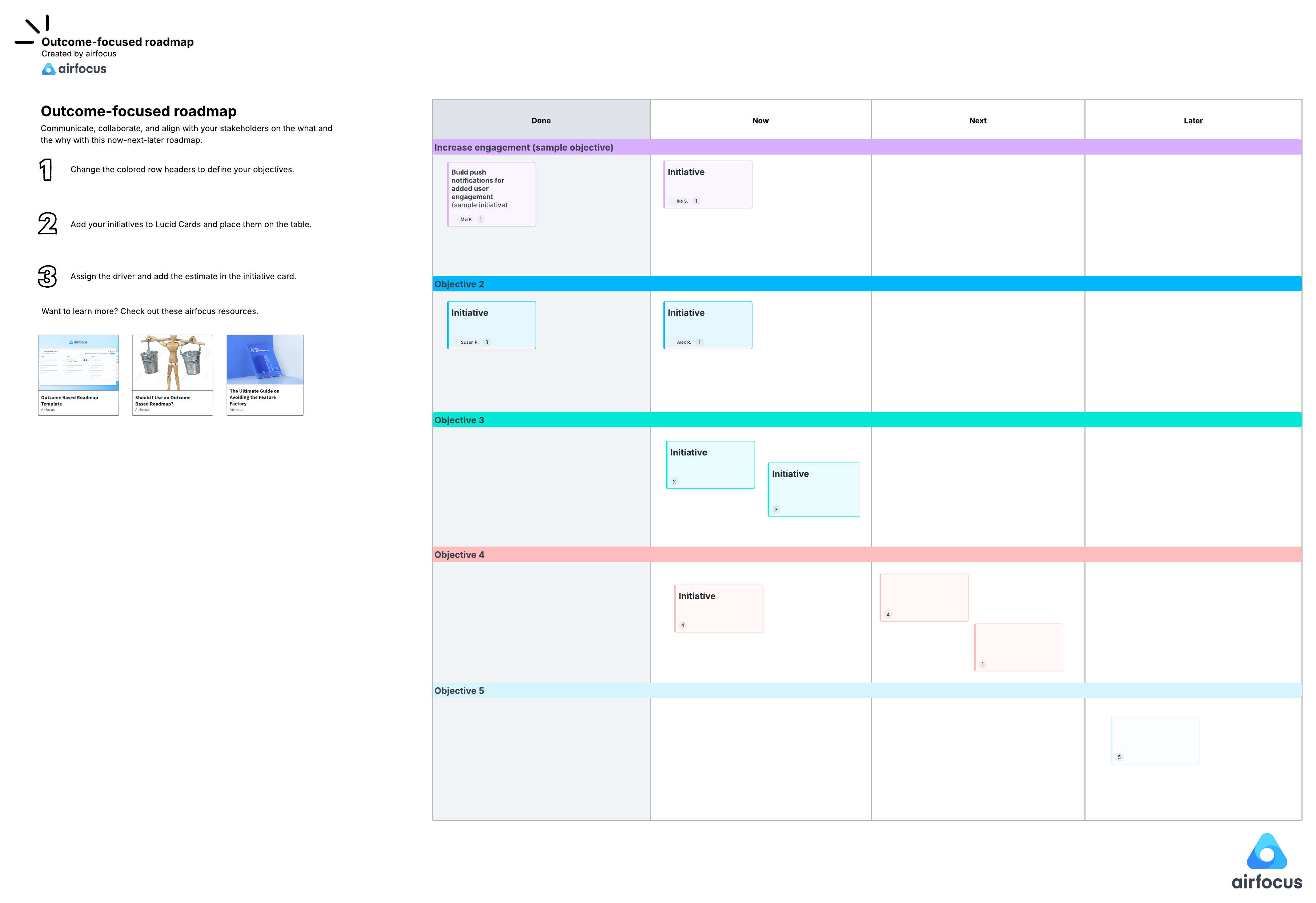
PI planning boards: If your project has a large number of stakeholders and you need to align with them, you can use PI planning boards to visualize the impact of a project and map out dependencies. The layout can help field discussion on any changes that may be needed to address stakeholder concerns while meeting key objectives.

RACI charts: RACI charts clarify specific roles and responsibilities for a project. They also map out who needs to be responsible, accountable, consulted, and informed throughout a project, streamlining collaboration.
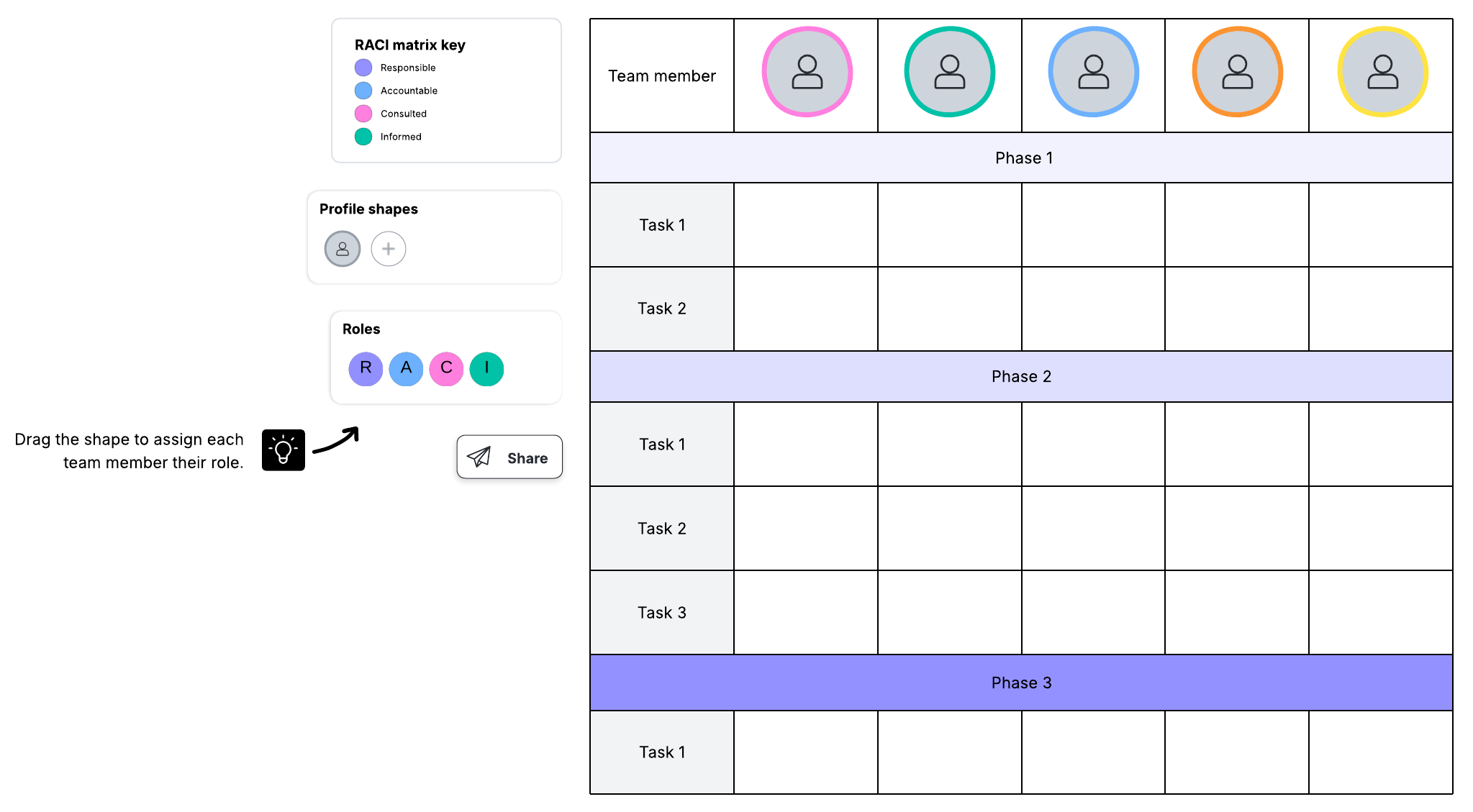
Communicate your project progress report plan
Once you’ve settled on how you will monitor your project and the tools you’ll use, you’ll need to communicate how you’ll share project progress reports with your team and stakeholders.
Plan on communicating early and often. You’ll want to have a schedule for when you update team members and stakeholders as the project goes on, and from time to time, teams may need a refresher on the overall goals of the project. The tools you choose for project management will help you easily visualize, summarize, and communicate as you steer your team toward successful project completion.
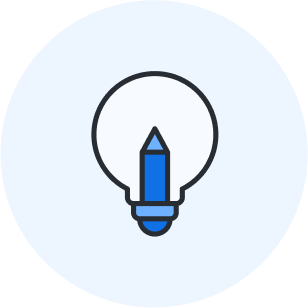
The importance of using milestones in project planning
Learn how to create effective milestones and ensure smooth project planning.
Go nowAbout Lucid
Lucid Software is the leader in visual collaboration and work acceleration, helping teams see and build the future by turning ideas into reality. Its products include the Lucid Visual Collaboration Suite (Lucidchart and Lucidspark) and airfocus. The Lucid Visual Collaboration Suite, combined with powerful accelerators for business agility, cloud, and process transformation, empowers organizations to streamline work, foster alignment, and drive business transformation at scale. airfocus, an AI-powered product management and roadmapping platform, extends these capabilities by helping teams prioritize work, define product strategy, and align execution with business goals. The most used work acceleration platform by the Fortune 500, Lucid's solutions are trusted by more than 100 million users across enterprises worldwide, including Google, GE, and NBC Universal. Lucid partners with leaders such as Google, Atlassian, and Microsoft, and has received numerous awards for its products, growth, and workplace culture.
Related articles
How to nail your next project status report (+ templates and examples)
Check out these tips for project status reports to ensure your projects stay on track.
How to plan a project: A step-by-step guide to project planning
Looking to simplify your project planning workflow? Lucid’s step-by-step guide makes visualizing project planning a breeze.
Importance of using milestones in project planning
In this post, we’ll cover the basics of project milestones, focusing on two questions: What is a project milestone? And why are project milestones an important element of project planning?
Project management basics in 6 foolproof steps
In this blog post, we will uncover six steps to creating a foolproof project plan.
